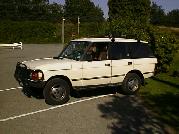 |
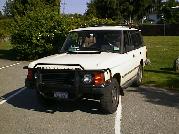 |
|
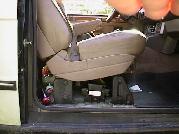 |
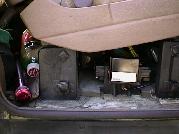 |
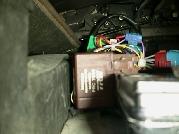 |
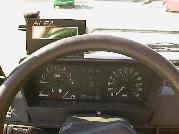 |
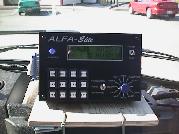 |
|
We came to the conclusion that we needed a computer. After research we settled on the Alfa Elite. Installing the computer was a concern for us. We really wanted to do an installation that was easy, clean and very reliable. To achieve this goal we sought to do as little extra wiring as possible and avoid the potentially troublesome external speed sensor and magnets. We hoped to use one of the several factory installed speed sensors but this was not an area we wanted to venture into without careful thought and an accurate map. Our first thought was to use the ABS wheel speed sensors. However, none of the service manuals provided detailed information about the ABS sensors or the ECU. Since the ABS sensor and ECU are very tightly coupled we worried about interfering with this subsystem. In addition, the ABS sensor pulse rate is very high (60 pulses/rotation) which would have required additional electronics to reduce it to a rate acceptable to the Alfa. In contrast to the ABS sensors, the Vehicle Speed Sensor was very well documented in the Range Rover service manual. It clearly described the characteristics of the sensor: six pulses per wheel rotation, each pulse being a 0 to 12 volt transition. We decided this would be our sensor. For reliability we hoped to not have to run wire under the car to the sensor itself. Studying the schematics we found the speed sensor supplies a signal to the Speedometer, Cruise Control Unit, ECU, and Emissions Maintenance Reminder Unit. The ECU and other critical electrics are under the navigator-side seat. We looked for a place under the seat to pick up the Vehicle Speed Sensor signal. In this case Range Rover made our job very easy. The Emissions Maintenance Reminder Unit (the brown part in the center of the third seat photo) has three useful input wires: one is constant +12V, one is ground, and one is input from the Vehicle Speed Sensor. This was perfect. We could have tossed the EMRU and used its connector but we chose to tread lightly and simply tap the leads. The next step was to make the Vehicle Speed Sensor signal compatible with the Alfa speed input. In this case we solicited the help of our official team electrical engineer, Nerfle. By referring to the specifications for the Alfa-supplied Hall Effect sensor Nerfle was able to determine the electrical characteristics that the Alfa expected. He provided us a simple circuit consisting of a resistor and transistor which gives the computer exactly what it requires while preventing the speed sensor and computer from interacting with each other in unexpected ways. Our careful planning paid off. The computer and sensor worked perfectly. |